Resistance bands leg workout ideas: Tone up with these four simple moves
Here are four resistance bands leg workout ideas that can help with strength training, especially at home.
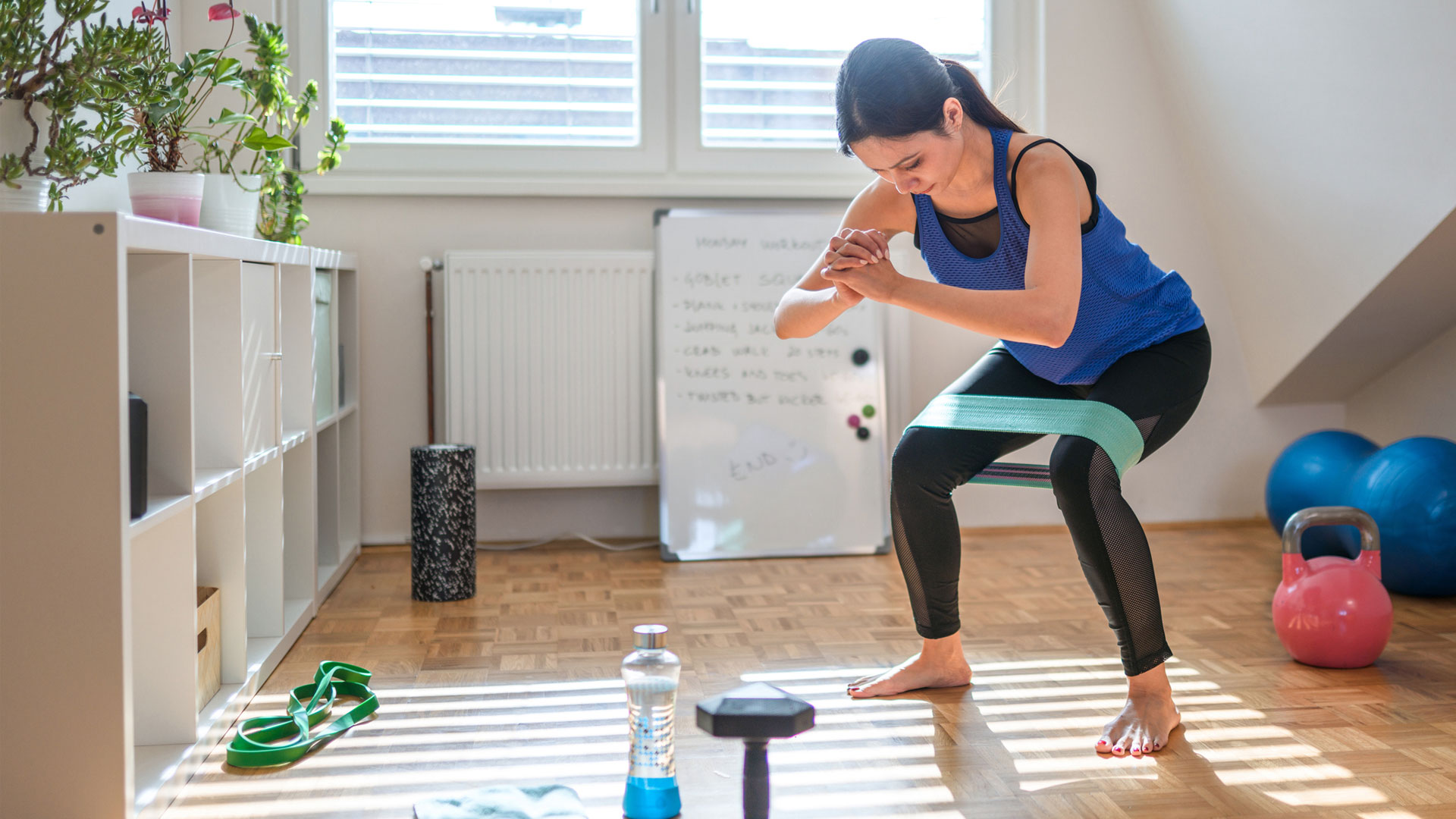
Stuck for resistance bands leg workout ideas? We've got four great exercises to help you get the most out of this versatile bit of kit. So as long as you have some of the best resistance bands at home, you'll be able to nail your leg day workout.
There are numerous benefits to resistance bands and they're particularly suited to doing regular leg workouts. Many of the muscles in the legs are the largest in the body and doing leg workouts can help with strength, stability, flexibility and explosive power. You can actually use resistance bands to target these muscles, and they are often cheaper, easier to use and more portable than the free weights you'll find in the gym.
According to Tash Lankester, PT at FLEX Chelsea, resistance bands are an "essential" tool for the home gym, in particular for beginners. Try these four simple exercises if you want to build strength in your legs.
Four resistance bands leg workout ideas
Banded squats
Squats are a classic leg workout and one of the most fundamental exercises any gym-goer or home workout proponent should do. According to Lankester, using resistance bands for your squat is particularly useful if you have weak abductor muscles—those around the side of your hips—and if your knees are prone to caving inwards, which is known as knee valgus.
Aimee Long, a London-based personal trainer, recommended banded squats as one of the best resistance band leg workouts. Here’s her guide to doing them: for this exercise, you should start by looping the band just above both knees, with feet hip-width distance apart.
Use the band to apply resistance during the squat and “really focus on getting the glutes engaged and firing”, Long said. “As you sink into the squat make sure the knees are driving against the band so they are not collapsing in.” As you lower down into a squat position, keep your chest upright and facing forwards; aim to hit 90 degrees depth in the squat before you drive back upwards to the standing position.
Want some more tips on maintaining proper form? Read our full article on how to do squats with resistance bands.
Get the world’s most fascinating discoveries delivered straight to your inbox.
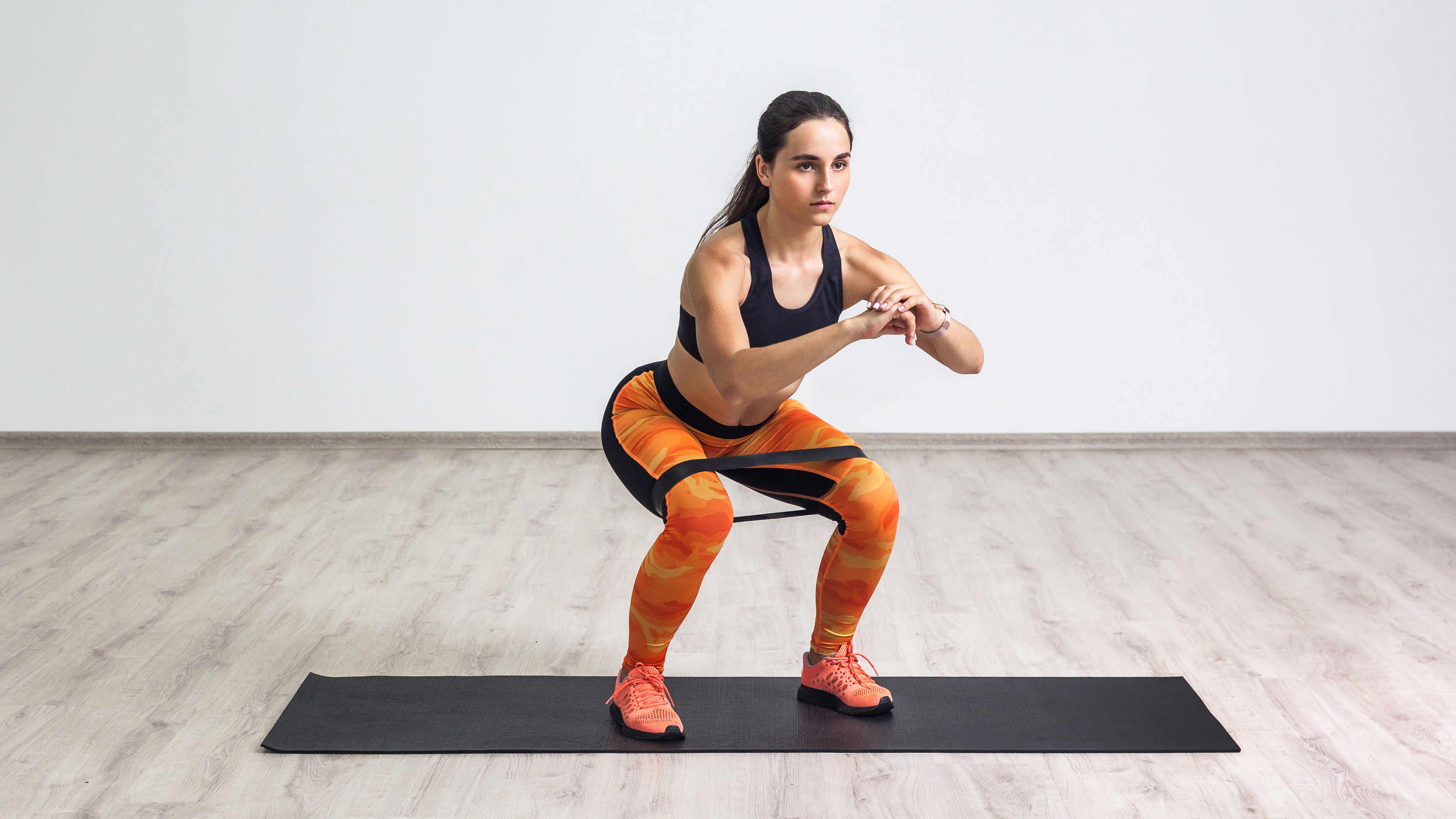
Lateral crab walks
Another resistance band leg workout recommended by Long is the lateral crab walk. Because it involves movement from side to side, you will need a little bit more space; it can be done in a reasonably-sized room, or a garden, garage or park, as well as the gym. To get into the starting position for this exercise, place a resistance band around both legs, just above the ankles. You then must dip down into a quarter-squat position, with feet pointed forward at around hip-width apart.
Next, step to the right, where you will feel some resistance from the band. Then take a controlled step in with the left foot, so your feet are once again back hip-width distance apart. Repeat this action about six or eight times, then go back in the opposite direction.
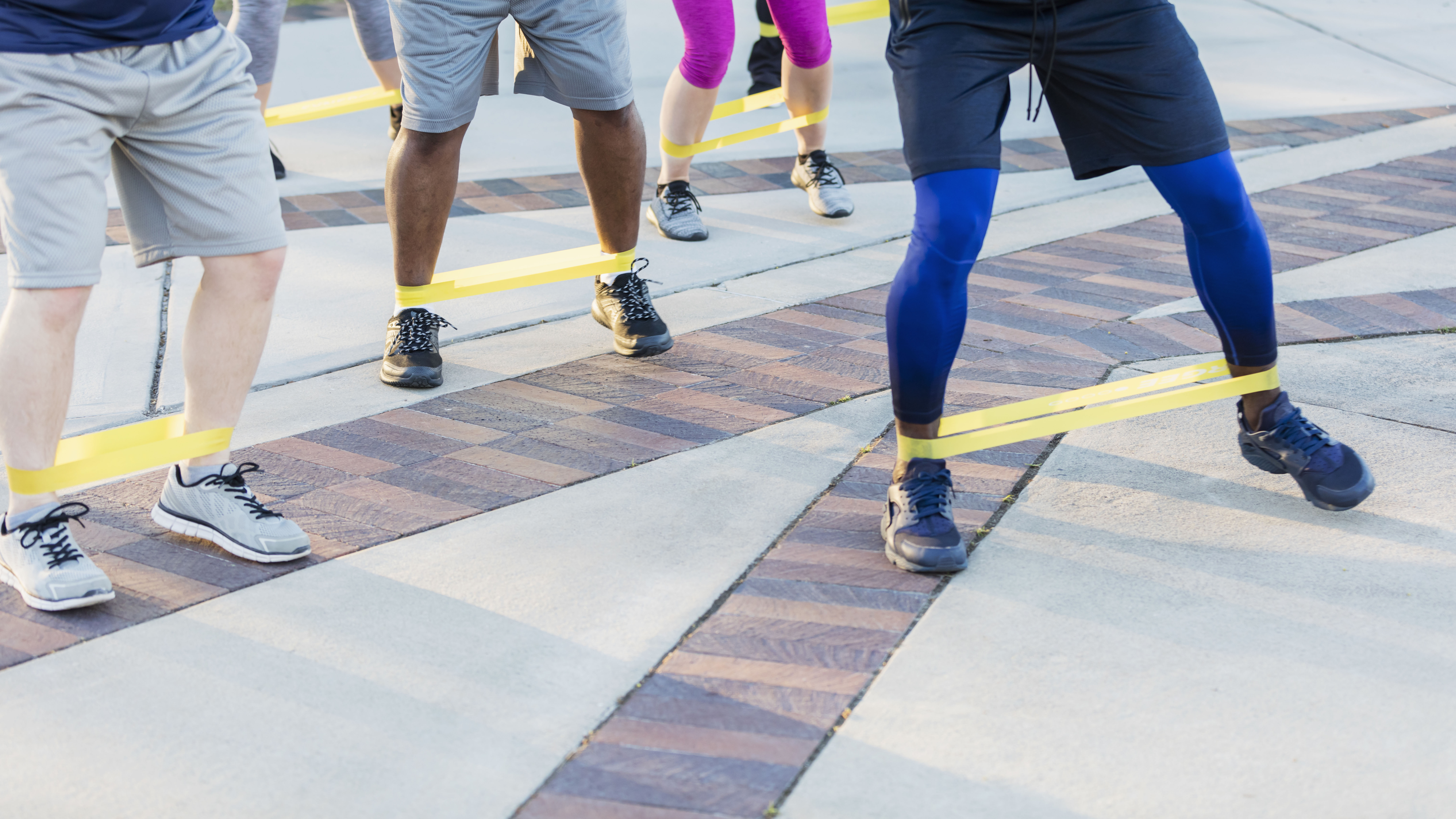
Glute bridges
Glute bridges are a very popular workout at the moment, and are particularly popular when carried out with the use of resistance bands. As the name suggests, they work your glutes, which are the muscles on your backside, as well as your core muscles.
To start, place the resistance band above your knees, then lie down on your back, with your feet flat on the floor, hip-width distance apart. Engage your abs and squeeze your glutes while pressing down through your heels to lift your pelvis off the floor, until your knees reach a 90-degree bend. Then in a slow and controlled manner, reverse the movement. This makes one repetition.
Throughout the movement, push your knees outwards against the band so that they are in line with your shoulders and feet. As well as changing the band to increase resistance if you feel that the exercise is too easy, you can also make glute bridges harder by lifting one foot off the ground by an inch, and pushing only with the opposite leg. This is called a single leg glute bridge.
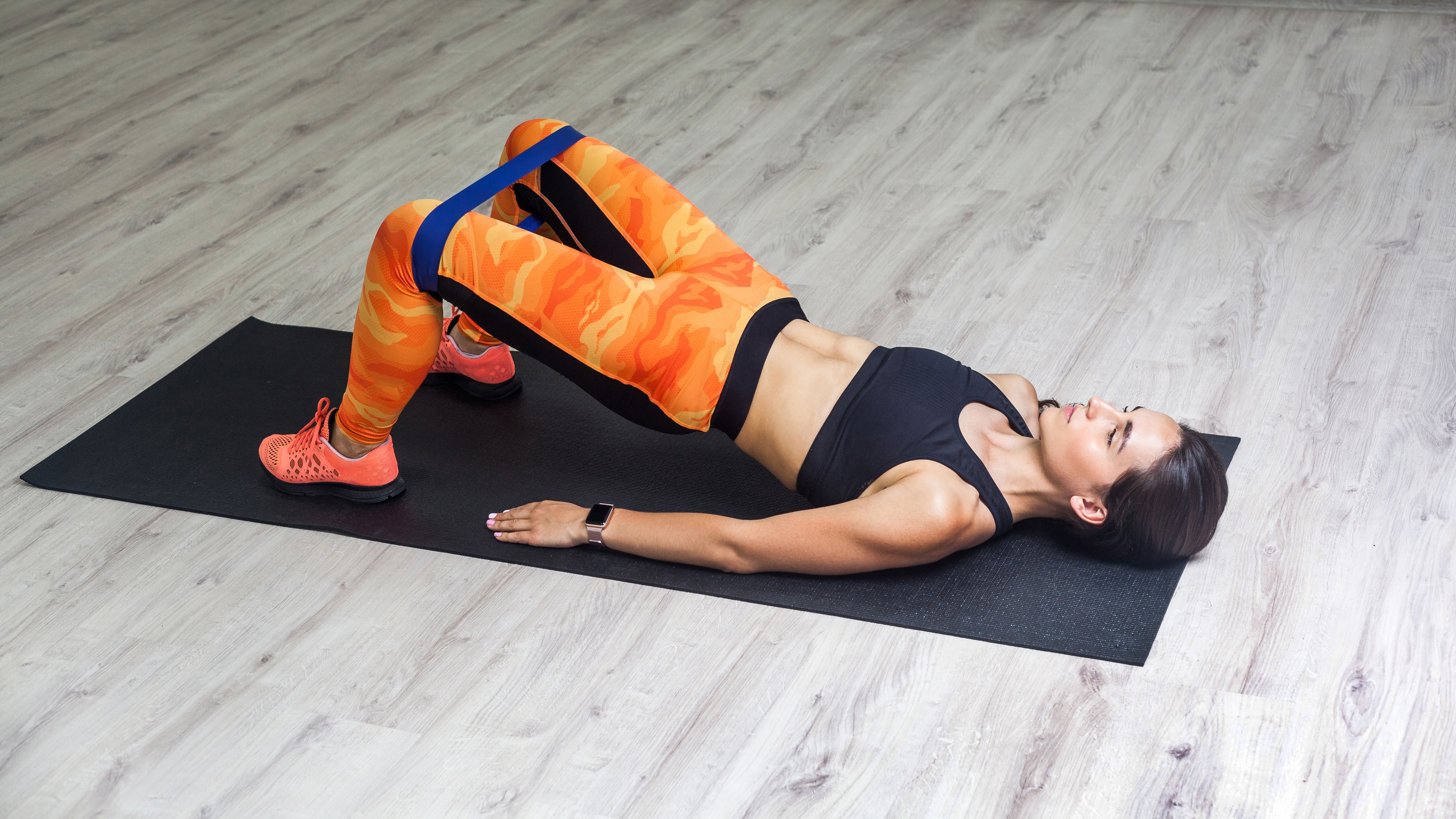
Deadlifts
Deadlifts are more typically done with a barbell or a specialized deadlift bar, but can also be effective when done with resistance bands, according to Dave Cross, master trainer at PureGym. When carried out with resistance bands, the effect will be slightly different compared to a traditional barbell deadlift, Cross said, because your body will be challenged most at the top of the lift, where there is most resistance from the band – the opposite way round to a bar.
To do this exercise, take up the usual deadlift position—feet shoulder width apart, toes pointing forward, core engaged and chest up—but with your feet standing on the resistance band. You will hold on to the resistance band as you would with the bar of the barbell in a traditional deadlift and perform the same action. Cross recommends that you make sure you have a secure anchor for the band—in this case your feet—and that it’s on a surface where it won’t slip.
He also recommends that to start using resistance bands, you are best using them as an addition to your body weight, rather than in combination with free weights or machines—such as with this deadlift example.
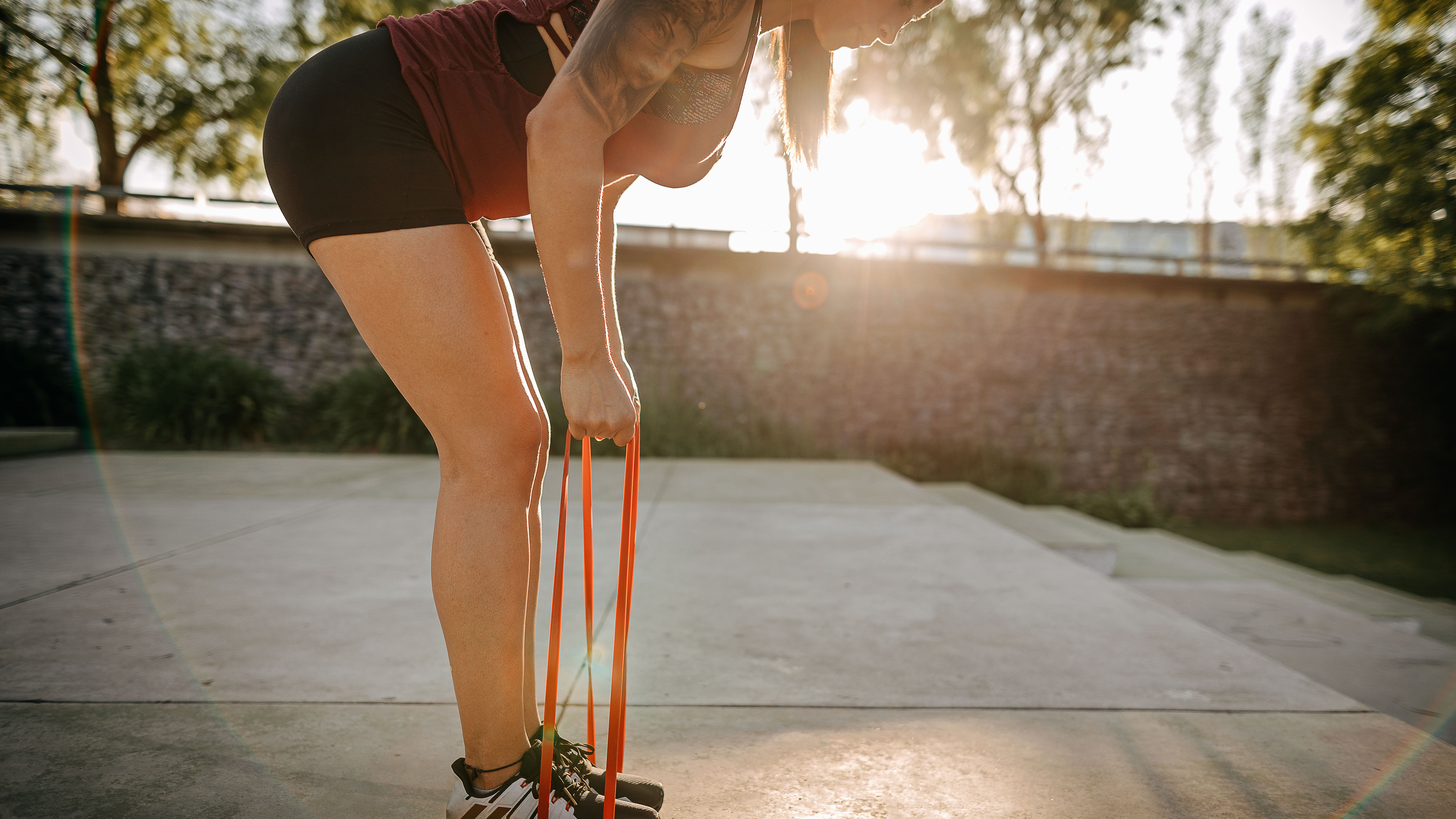
Looking for more inspiration? Try a simple weights at home workout routine, if you have some dumbbells to hand, or try a low impact workout if you want to keep noise to a minimum.
- Related: 10 stretches to do every day
Sam Clark is a journalist based in London in the United Kingdom, who covers stories about fitness, sport and health, as well as the less heart-raising worlds of business and law. His sporting passions include running, cycling and squash. Sam has a bachelor’s degree in history and a master’s degree in multimedia journalism from the University of Kent.



